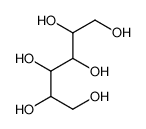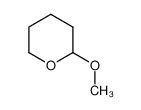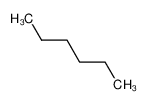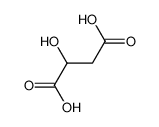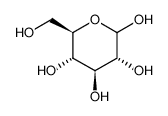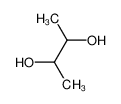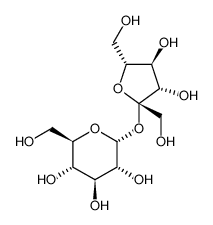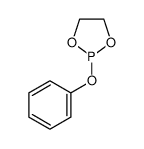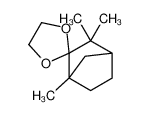1.Identification
1.1 GHS Product identifier
| Product name | Ethylene glycol |
|---|
1.2 Other means of identification
| Product number | - |
|---|---|
| Other names | 1,2-dihydroxy ethane |
1.3 Recommended use of the chemical and restrictions on use
| Identified uses | For industry use only. Ethylene glycol is used as antifreeze in cooling and heating systems, in hydraulic brake fluids, as an industrial humectant, as an ingredient of electrolytic condensers, as a solvent in the paint and plastics industries, in the formulations of printers' inks, stamp pad inks, and inks for ballpoint pens, as a softening agent for cellophane, and in the synthesis of safety explosives, plasticizers, synthetic fibers (Terylene, Dacron), and synthetic waxes. Ethylene glycol is also used to de-ice airport runways and aircraft. (2) |
|---|---|
| Uses advised against | no data available |
1.4 Supplier's details
| Company | MOLBASE (Shanghai) Biotechnology Co., Ltd. |
|---|---|
| Address | Floor 4 & 5, Building 12, No. 1001 North Qinzhou Road, Xuhui District, Shanghai, China |
| Telephone | +86(21)64956998 |
| Fax | +86(21)54365166 |
1.5 Emergency phone number
| Emergency phone number | +86-400-6021-666 |
|---|---|
| Service hours | Monday to Friday, 9am-5pm (Standard time zone: UTC/GMT +8 hours). |
2.Hazard identification
2.1 Classification of the substance or mixture
Acute toxicity - Oral, Category 4
2.2 GHS label elements, including precautionary statements
| Pictogram(s) |  |
|---|---|
| Signal word | Warning |
| Hazard statement(s) | H302 Harmful if swallowed |
| Precautionary statement(s) | |
| Prevention | P264 Wash ... thoroughly after handling. P270 Do not eat, drink or smoke when using this product. |
| Response | P301+P312 IF SWALLOWED: Call a POISON CENTER/doctor/…if you feel unwell. P330 Rinse mouth. |
| Storage | none |
| Disposal | P501 Dispose of contents/container to ... |
2.3 Other hazards which do not result in classification
none
3.Composition/information on ingredients
3.1 Substances
| Chemical name | Common names and synonyms | CAS number | EC number | Concentration |
|---|---|---|---|---|
| Ethylene glycol | Ethylene glycol | 107-21-1 | none | 100% |
4.First-aid measures
4.1 Description of necessary first-aid measures
General advice
Consult a physician. Show this safety data sheet to the doctor in attendance.
If inhaled
Fresh air, rest. Artificial respiration may be needed. Refer for medical attention.
In case of skin contact
Remove contaminated clothes. Rinse skin with plenty of water or shower.
In case of eye contact
First rinse with plenty of water for several minutes (remove contact lenses if easily possible), then refer for medical attention.
If swallowed
Rinse mouth. Induce vomiting (ONLY IN CONSCIOUS PERSONS!). Refer for medical attention .
4.2 Most important symptoms/effects, acute and delayed
Inhalation of vapor is not hazardous. Ingestion causes stupor or coma, sometimes leading to fatal kidney injury. (USCG, 1999)
4.3 Indication of immediate medical attention and special treatment needed, if necessary
/SRP:/ Immediate first aid: Ensure that adequate decontamination has been carried out. If patient is not breathing, start artificial respiration, preferably with a demand-valve resuscitator, bag-valve-mask device, or pocket mask, as trained. Perform CPR as necessary. Immediately flush contaminated eyes with gently flowing water. Do not induce vomiting. If vomiting occurs, lean patient forward or place on left side (head-down position, if possible) to maintain an open airway and prevent aspiration. Keep patient quiet and maintain normal body temperature. Obtain medical attention. /Ethylene glycol, glycols, and related compounds/
5.Fire-fighting measures
5.1 Extinguishing media
Suitable extinguishing media
In case of fire in the surroundings: carbon dioxide, foam, powder, water spray.
5.2 Specific hazards arising from the chemical
This chemical is combustible.
5.3 Special protective actions for fire-fighters
Wear self-contained breathing apparatus for firefighting if necessary.
6.Accidental release measures
6.1 Personal precautions, protective equipment and emergency procedures
Use personal protective equipment. Avoid dust formation. Avoid breathing vapours, mist or gas. Ensure adequate ventilation. Evacuate personnel to safe areas. Avoid breathing dust. For personal protection see section 8.
6.2 Environmental precautions
Personal protection: filter respirator for organic gases and vapours adapted to the airborne concentration of the substance. Collect leaking and spilled liquid in sealable containers as far as possible. Wash away remainder with plenty of water.
6.3 Methods and materials for containment and cleaning up
Collect leaking liquid in covered containers. Wash away spilled liquid with plenty of water.
7.Handling and storage
7.1 Precautions for safe handling
Avoid contact with skin and eyes. Avoid formation of dust and aerosols. Avoid exposure - obtain special instructions before use.Provide appropriate exhaust ventilation at places where dust is formed. For precautions see section 2.2.
7.2 Conditions for safe storage, including any incompatibilities
Separated from strong oxidants and strong bases. Dry. Ventilation along the floor.Polyethylene glycols should be stored in well-closed containers in a cool, dry place. Stainless steel, aluminum, glass, or lined steel containers are preferred for the storage of liquid grades.
8.Exposure controls/personal protection
8.1 Control parameters
Occupational Exposure limit values
no data available
Biological limit values
no data available
8.2 Appropriate engineering controls
Handle in accordance with good industrial hygiene and safety practice. Wash hands before breaks and at the end of workday.
8.3 Individual protection measures, such as personal protective equipment (PPE)
Eye/face protection
Safety glasses with side-shields conforming to EN166. Use equipment for eye protection tested and approved under appropriate government standards such as NIOSH (US) or EN 166(EU).
Skin protection
Wear impervious clothing. The type of protective equipment must be selected according to the concentration and amount of the dangerous substance at the specific workplace. Handle with gloves. Gloves must be inspected prior to use. Use proper glove removal technique(without touching glove's outer surface) to avoid skin contact with this product. Dispose of contaminated gloves after use in accordance with applicable laws and good laboratory practices. Wash and dry hands. The selected protective gloves have to satisfy the specifications of EU Directive 89/686/EEC and the standard EN 374 derived from it.
Respiratory protection
Wear dust mask when handling large quantities.
Thermal hazards
no data available
9.Physical and chemical properties
| Physical state | clear viscous liquid |
|---|---|
| Colour | Clear, colorless, viscous liquids to waxy solids |
| Odour | no data available |
| Melting point/ freezing point | -13°C(lit.) |
| Boiling point or initial boiling point and boiling range | 195-198°C |
| Flammability | Combustible. |
| Lower and upper explosion limit / flammability limit | no data available |
| Flash point | 111°C |
| Auto-ignition temperature | 400°C |
| Decomposition temperature | no data available |
| pH | no data available |
| Kinematic viscosity | /p>PEG 400: 105 to 130 mPa.s at 20 °C; PEG 3000: 75 to 100 mPa.s at 20 °C; PEG 3350: 83 to 120 mPa.s at 20 °C; PEG 4000: 110 to 170 mPa.s at 20 °C; PEG 6000: 200 to 270 mPa.s at 20 °C; PEG 8000: 260 to 510 mPa.s at 20 °C; For polyethylene glycols having a average molecular weight greater than 400, the viscosity is determined on a 50 per cent m/m solution of the candidate substance in water |
| Solubility | In water:miscible |
| Partition coefficient n-octanol/water (log value) | -1.93 |
| Vapour pressure | 0.08 mm Hg ( 20 °C) |
| Density and/or relative density | 1.113g/mLat 25°C(lit.) |
| Relative vapour density | 2.1 (vs air) |
| Particle characteristics | no data available |
10.Stability and reactivity
10.1 Reactivity
no data available
10.2 Chemical stability
Polyethylene glycols are chemically stable in air and in solution, although grades with a mol wt < 2000 are hygroscopic. Polyethylene glycols do not support microbial growth, and they do not become rancid. Polyethylene glycols and aqueous polyethylene glycol solutions can be sterilized by autoclaving, filtration, or gamma irradiation ... Ideally, sterilization should be carried out in an inert atmosphere.
10.3 Possibility of hazardous reactions
CombustibleVapors are heavier than air and will collect and stay in poorly-ventilated, low-lying, or confined areas (e.g., sewers, basements, and tanks).Hazardous concentrations may develop quickly in enclosed, poorly-ventilated, or low-lying areas. Keep out of these areas. Stay upwind.Mixing ETHYLENE GLYCOL in equal molar portions with any of the following substances in a closed container caused the temperature and pressure to increase: chlorosulfonic acid, oleum, sulfuric acid, [NFPA 1991].
10.4 Conditions to avoid
no data available
10.5 Incompatible materials
Materials to avoid: Strong oxidizing agents.
10.6 Hazardous decomposition products
When heated to decomposition it emits acrid smoke and irritating fumes.
11.Toxicological information
Acute toxicity
- Oral: Animal toxicity data for Polyethylene glycols (see Table) LD50 mg/kg PEG grade Guinea pig (oral) Mouse (ip) Mouse (iv) Mouse (oral) Rabbit (oral) Rabbit (iv) Rat (ip) Rat (iv) Rat (oral) 200 --- 7500 --- 3400 19900 --- --- --- 28000 300 19600 --- --- 17300 --- --- --- --- 27500 400 15700 10000 8600 28900 26800 --- 9700 7300 --- 600 --- --- --- 47000 --- --- --- --- 38100 1000 --- 20000 --- --- --- --- 15600 --- 44200 1500 28900 --- --- --- 28900 8000 17700 --- 44200 4000 50900 --- 16000 --- 76000 --- 11600 --- 50000 6000 50000 --- --- --- --- --- 6800 --- ---
- Inhalation: no data available
- Dermal: no data available
Skin corrosion/irritation
no data available
Serious eye damage/irritation
no data available
Respiratory or skin sensitization
no data available
Germ cell mutagenicity
no data available
Carcinogenicity
TLV-A4
Reproductive toxicity
No information is available on the reproductive or developmental effects of ethylene glycol in humans. Several studies of rodents exposed orally or by inhalation showed ethylene glycol to affect animal fetuses. Fetotoxicity manifested as increased preimplantation loss, delayed ossification, and an increased incidence of fetal malformations were reported. The inhalation study, however, noted continuous grooming of the fur, resulting in a high rate of exposure by ingestion as well.
STOT-single exposure
no data available
STOT-repeated exposure
no data available
Aspiration hazard
no data available
12.Ecological information
12.1 Toxicity
- Toxicity to fish: LC50; Species: Oncorhynchus mykiss (Rainbow trout, weight 25-50 g); Conditions: freshwater, static, 14°C, pH 7.2, dissolved oxygen 10 mg/L; Concentration: >20000000 ug/L for 96 hr /PEG400
- Toxicity to daphnia and other aquatic invertebrates: no data available
- Toxicity to algae: no data available
- Toxicity to microorganisms: no data available
12.2 Persistence and degradability
... will not support mold growth
12.3 Bioaccumulative potential
no data available
12.4 Mobility in soil
no data available
12.5 Other adverse effects
no data available
13.Disposal considerations
13.1 Disposal methods
Product
The material can be disposed of by removal to a licensed chemical destruction plant or by controlled incineration with flue gas scrubbing. Do not contaminate water, foodstuffs, feed or seed by storage or disposal. Do not discharge to sewer systems.
Contaminated packaging
Containers can be triply rinsed (or equivalent) and offered for recycling or reconditioning. Alternatively, the packaging can be punctured to make it unusable for other purposes and then be disposed of in a sanitary landfill. Controlled incineration with flue gas scrubbing is possible for combustible packaging materials.
14.Transport information
14.1 UN Number
| ADR/RID: UN3082 | IMDG: UN3082 | IATA: UN3082 |
14.2 UN Proper Shipping Name
| ADR/RID: ENVIRONMENTALLY HAZARDOUS SUBSTANCE, LIQUID, N.O.S. |
| IMDG: ENVIRONMENTALLY HAZARDOUS SUBSTANCE, LIQUID, N.O.S. |
| IATA: ENVIRONMENTALLY HAZARDOUS SUBSTANCE, LIQUID, N.O.S. |
14.3 Transport hazard class(es)
| ADR/RID: 9 | IMDG: 9 | IATA: 9 |
14.4 Packing group, if applicable
| ADR/RID: III | IMDG: III | IATA: III |
14.5 Environmental hazards
| ADR/RID: no | IMDG: no | IATA: no |
14.6 Special precautions for user
no data available
14.7 Transport in bulk according to Annex II of MARPOL 73/78 and the IBC Code
no data available
15.Regulatory information
15.1 Safety, health and environmental regulations specific for the product in question
| Chemical name | Common names and synonyms | CAS number | EC number |
|---|---|---|---|
| Ethylene glycol | Ethylene glycol | 107-21-1 | none |
| European Inventory of Existing Commercial Chemical Substances (EINECS) | Listed. | ||
| EC Inventory | Listed. | ||
| United States Toxic Substances Control Act (TSCA) Inventory | Listed. | ||
| China Catalog of Hazardous chemicals 2015 | Not Listed. | ||
| New Zealand Inventory of Chemicals (NZIoC) | Listed. | ||
| Philippines Inventory of Chemicals and Chemical Substances (PICCS) | Listed. | ||
| Vietnam National Chemical Inventory | Listed. | ||
| Chinese Chemical Inventory of Existing Chemical Substances (China IECSC) | Listed. | ||
16.Other information
Information on revision
| Creation Date | Aug 10, 2017 |
|---|---|
| Revision Date | Aug 10, 2017 |
Abbreviations and acronyms
- CAS: Chemical Abstracts Service
- ADR: European Agreement concerning the International Carriage of Dangerous Goods by Road
- RID: Regulation concerning the International Carriage of Dangerous Goods by Rail
- IMDG: International Maritime Dangerous Goods
- IATA: International Air Transportation Association
- TWA: Time Weighted Average
- STEL: Short term exposure limit
- LC50: Lethal Concentration 50%
- LD50: Lethal Dose 50%
- EC50: Effective Concentration 50%
References
- IPCS - The International Chemical Safety Cards (ICSC), website: http://www.ilo.org/dyn/icsc/showcard.home
- HSDB - Hazardous Substances Data Bank, website: https://toxnet.nlm.nih.gov/newtoxnet/hsdb.htm
- IARC - International Agency for Research on Cancer, website: http://www.iarc.fr/
- eChemPortal - The Global Portal to Information on Chemical Substances by OECD, website: http://www.echemportal.org/echemportal/index?pageID=0&request_locale=en
- CAMEO Chemicals, website: http://cameochemicals.noaa.gov/search/simple
- ChemIDplus, website: http://chem.sis.nlm.nih.gov/chemidplus/chemidlite.jsp
- ERG - Emergency Response Guidebook by U.S. Department of Transportation, website: http://www.phmsa.dot.gov/hazmat/library/erg
- Germany GESTIS-database on hazard substance, website: http://www.dguv.de/ifa/gestis/gestis-stoffdatenbank/index-2.jsp
- ECHA - European Chemicals Agency, website: https://echa.europa.eu/




